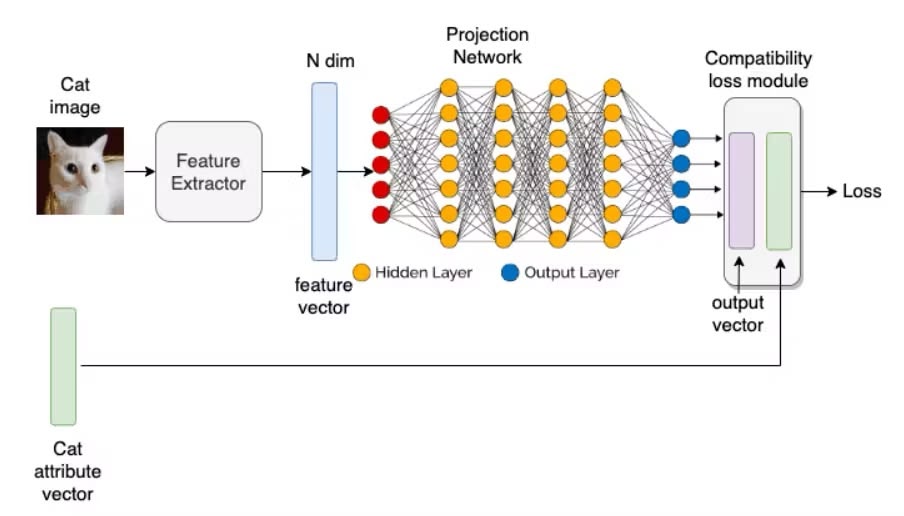
What is Zero-shot learning (ZSL) ?
Zero-shot learning (ZSL) is a machine learning approach that enables models to recognize and categorize things they have never seen before without needing any labeled examples of those new things during training. Unlike supervised learning that require a lot of labeled data, that must be categorized explicitly, ZSL uses auxiliary information such as semantic embeddings (which are numerical representations of the meaning of words or concepts) or attributes (descriptive features like color, shape, or category).
How does Zero-Shot Learning Work ?
As we’ve said previously, ZSL uses auxiliary information to fill the gap between what it has seen (“seen classes”) and what it hasn’t (“unseen classes”), here’s a breakdown:
- Seen Classes: Categories the model is trained on, with labeled examples.
- Unseen Classes: New categories the model has never seen during training.
- Auxiliary Information: Descriptions, attributes, or semantic relationships that describe both seen and unseen classes (e.g., “a zebra is like a horse but with stripes”)
Example: Let’s say you’ve trained your model to recognize horses and cats, but you never show it a zebra. Then, you proceed to describe what a zebra is like, for instance you could say a zebra is a “horse with stripes”, the model can use what it knows about horses and the new information about stripes to identify a zebra even though it has never seen one before.
What’s the process like ?
Zero-Shot Learning usually consists of two main stages:
- Training: Making the model learn from labeled data so that it can recognize what it has been trained on.
- Inference: When the model is shown something it hasn’t seen before, it uses the auxiliary information it gained from the previous step and the new example to make a prediction based on the similarities.
Why is it Important ?
- Saves Time and Resources: No need to collect and label huge datasets for every possible category.
- Handles Rare or New Cases: Models can recognize new, rare, or emerging classes without retraining.
- Real-World Flexibility: Useful in areas where new categories appear often or labeled data is hard to get, such as medical imaging, language processing, or wildlife monitoring
Applications of Zero-Shot Learning
- Image Classification: Recognizing new types of animals or objects without labeled images.
- Natural Language Processing: Understanding new topics or intents in text without explicit examples.
- Medical Diagnosis: Identifying rare diseases using descriptions and relationships to known conditions.
- Automated Grading: Generating feedback for new types of assignments using knowledge of similar tasks.
Challenges of ZSL
- Quality of Auxiliary Information: The model’s success depends on how well the attributes or descriptions capture the differences between classes.
- Generalization Limits: If unseen classes are very different from seen classes, the model may struggle to make accurate predictions.
Summary
Zero-shot learning empowers AI systems to make sense of the unknown by leveraging relationships, descriptions, and attributes-allowing them to recognize new things without ever having seen them before. This makes AI more adaptable, efficient, and useful in a world where new data and categories are constantly emerging.
Learn more about Zero-Shot Learning
IBM: https://www.ibm.com/think/topics/zero-shot-learning
Grammarly: https://www.grammarly.com/blog/ai/what-is-zero-shot-learning/
V7Labs: https://www.v7labs.com/blog/zero-shot-learning-guide
Encord: https://encord.com/blog/zero-shot-learning-explained/

Leave a Reply